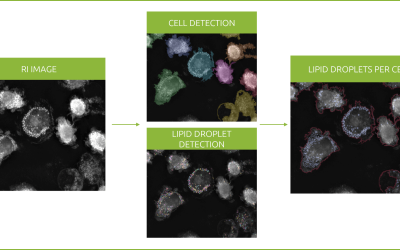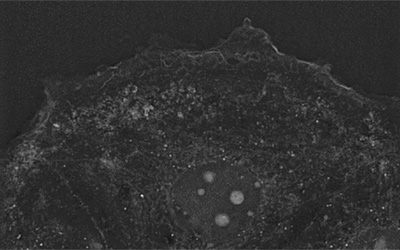Caspase-8 deficiency induces a switch from TLR3-induced apoptosis to lysosomal cell death in neuroblastoma cell lines
Nanolive is happy to announce a new publication from users of the 3D Cell Explorer-Fluo based at the Cancer Research Centre in Lyon, France.
Evasion of apoptosis, one of the hallmarks of cancer, leads to anti-cancer therapy resistance. In order to overcome this resistance alternative forms of programmed cell death such as autophagic/lysosomal cell death and necrosis can be induced. TLR3 are inflammatory receptors expressed by both immune and epithelial cells. Their synthetic ligands are already used as adjuvant in cancer therapy, due to their role in modulating inflammatory signalling pathways.
Knowledge to date suggested that TLR3 functions via two mechanisms of action: (1) by facilitating the activation of caspase-8 and thus, the activation of the extrinsic apoptosis caspase-cascade, or (2) by recruiting and activating the key necrotic factor RIPK3, leading to plasma membrane permeabilization. In this article, Locquet and colleagues unveil a new mechanism of TLR3-induced cell death, executed by lysosomal cathepsins and accompanied by the enlargement and accumulation of lysosomes, which eventually result in the activation of the mitochondrial apoptotic pathway. This mechanism of lysosomal cell death is a default death mechanism in the absence of caspase-8, when the extrinsic apoptotic pathway is not activated [1].
To prove this, two neuroblastoma cell lines were cultured, and TLR3-induced lysosomal cell death was experimentally induced. Immunochemistry, gene quantification and cell viability studies were performed. An epifluorescent marker that is specific to lysosomes was then applied to the cell cultures and Nanolive’s 3D Cell Explorer-Fluo was used to record a time series of the 3D refractive index maps, with the corresponding lysosome-specific fluorescence signal. Lysosome observations allowed the authors to qualitatively account for increases in both the number and size of lysosomes (see Figure 1). Cells exposed to TLR3 were rounder and showed signs of membrane blebbing; both characteristic features of apoptosis. These results suggest that activation of the TLR3 induced caspase-independent lysosomal membrane permeabilization occurs at the same time as caspase activation downstream of lysosomal membrane permeabilization, resulting in an apoptotic morphology of the dying cell.
Read the full publication here!
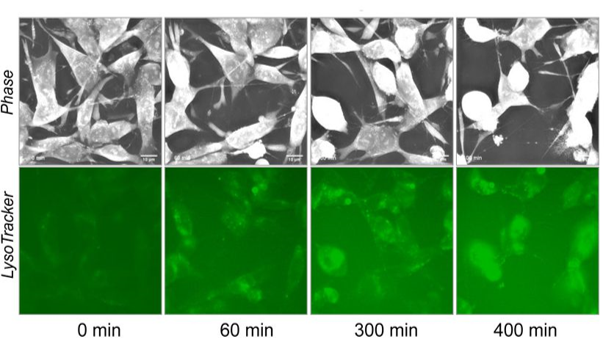
Figure 1. IFN-1/poly(I:C) induced cell death involves lysosomes. Time series of SH-SY5Y cells 2D Refractive index I maps, individual lysosome-specific fluorescence signal (LysotrackerGreen™), and overlay of Lysosome segmentations after treatment with IFN-1/poly(I:C) (OA) (related to movie shown in Supplemental information (from Figure 3C in [1]).
[1] Locquet, Marie & Ichim, Gabriel & Dutour, Aurelie & Lebecque, Serge & Castets, Marie & Weber, Kathrin. (2020). Caspase-8 deficiency induces a switch from TLR3 induced apoptosis to lysosomal cell death in neuroblastoma cell lines. 10.1101/2020.01.13.904987.
Read our latest news
Revolutionizing lipid droplet analysis: insights from Nanolive’s Smart Lipid Droplet Assay Application Note
Introducing the Smart Lipid Droplet Assay: A breakthrough in label-free lipid droplet analysis Discover the power of Nanolive's Smart Lipid Droplet Assay (SLDA), the first smart digital assay to provide a push-button solution for analyzing lipid droplet dynamics,...
Food additives and gut health: new research from the University of Sydney
The team of Professor Wojciech Chrzanowski in the Sydney Pharmacy School at the University of Sydney have published their findings on the toxic effect of titanium nanoparticles found in food. The paper “Impact of nano-titanium dioxide extracted from food products on...
2023 scientific publications roundup
2023 has been a record year for clients using the Nanolive system in their scientific publications. The number of peer-reviewed publications has continued to increase, and there has been a real growth in groups publishing pre-prints to give a preview of their work....
Nanolive microscopes
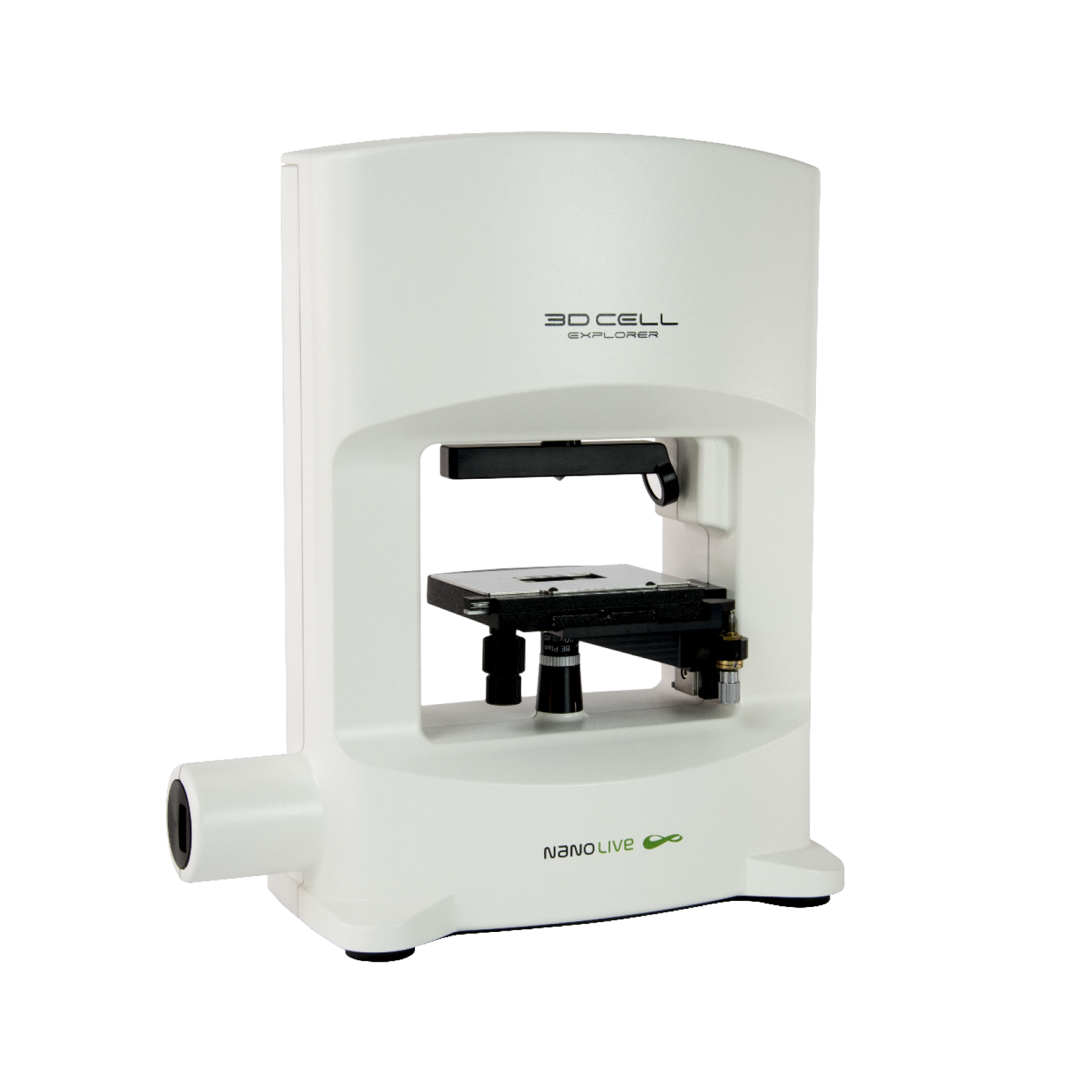
3D CELL EXPLORER
Budget-friendly, easy-to-use, compact solution for high quality non-invasive 4D live cell imaging
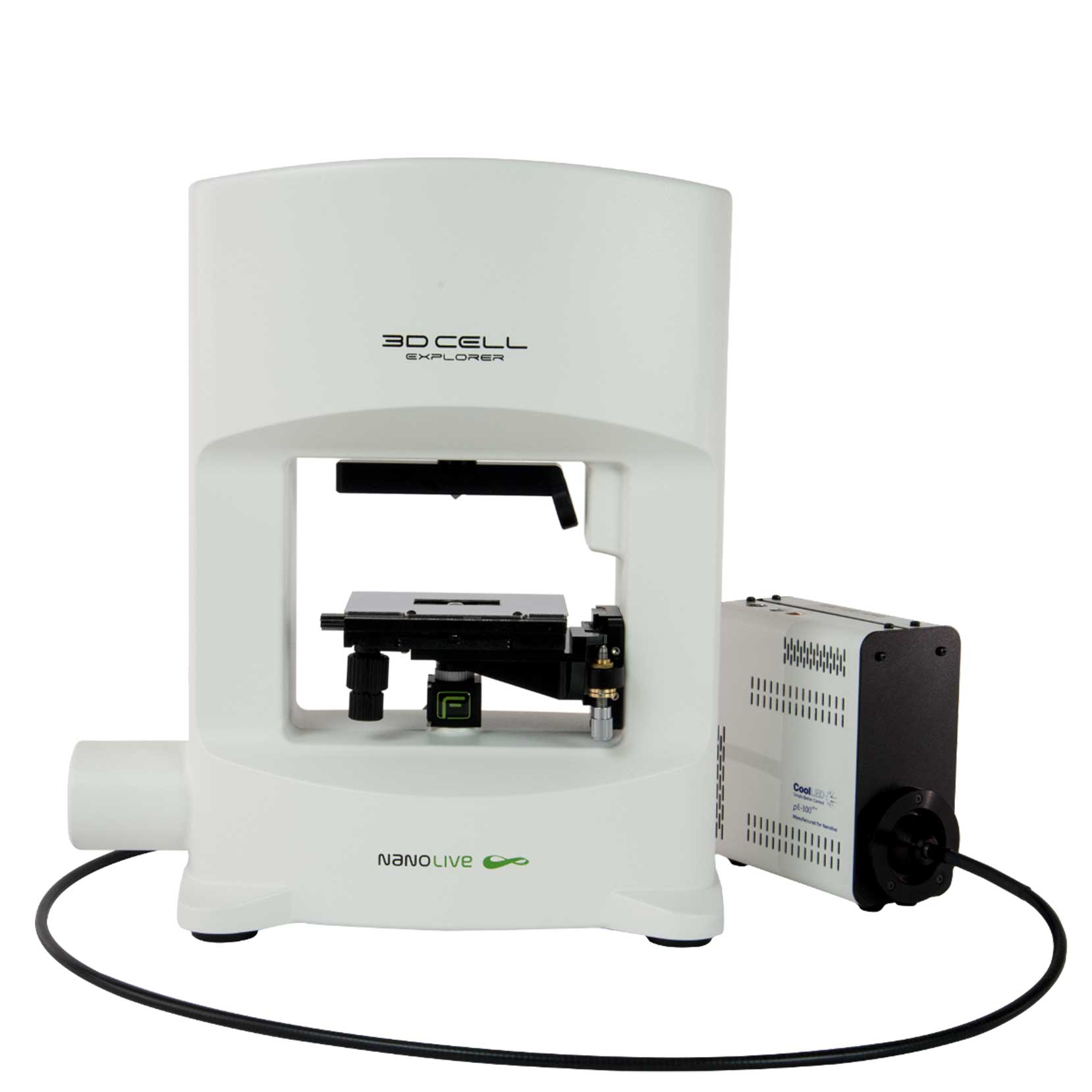
3D CELL EXPLORER-fluo
Multimodal Complete Solution: combine high quality non-invasive 4D live cell imaging with fluorescence

CX-A
Automated live cell imaging: a unique walk-away solution for long-term live cell imaging of single cells and cell populations

